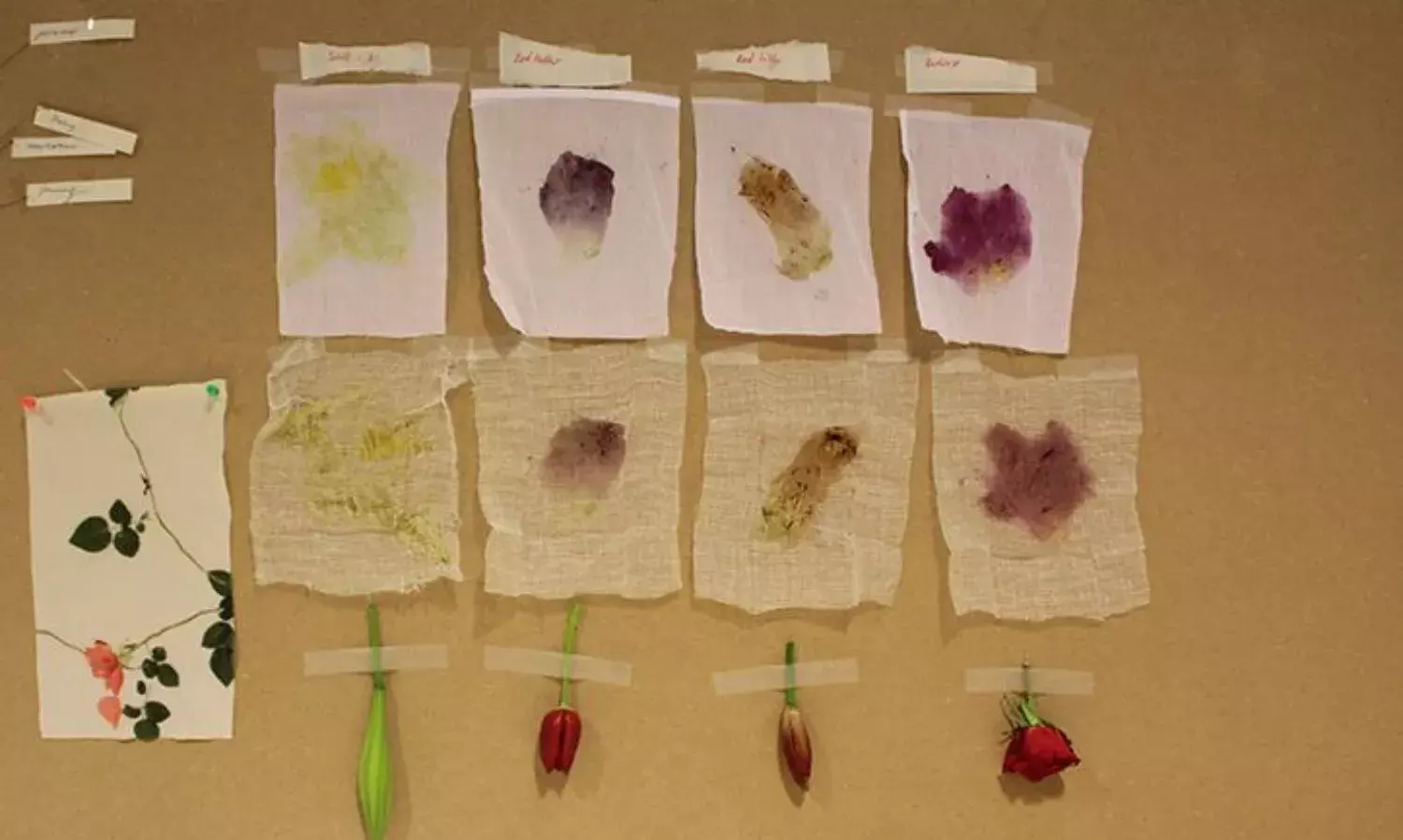The Art of Memories and Histories
Imprint, After at Pulp Society and 'Times, Lines, 1989s' - India Art Fair

We are all artists, creating spots of sunshine, notes of memoirs, anecdotes of the past, creating movements, filling up blank pages with handwritten carols, reciting repressed agitation, painting reels of unfulfilled pipedreams. We draw out moments in our mind, we carry anger, fear, happiness, love, a reaction to every flight, an emotion for every rendezvous, a word for every wind, we are gentle reminders of time, our skin growing into youth, into wrinkled lines of experience.
An Exhibition in New Delhi: ‘Imprint, After’ opens its doors to possibilities of showcasing Art in a different light, with paper and print becoming the messengers of thought and memory, through art works by various artists and their interpretations and intervention into well documented processes of paper-pulp making, lithography and the printing press, cyanotype, block printing, flower print, and blind embossing. ‘Imprint, After’ at Pulp Society, a contemporary art gallery and project space in Delhi, is a culmination of unconventional applications of print technique, paper being the carrier of memory, emotion, history and narrative. It outlines and displays Imprint in two ways – one as a physical mark making technique when something is pressed unto a surface to leave an impression, or as to imprint or place an event firmly into memory.
‘After’ is the experimental possibilities that emerge when the artists depart from the limits of conventional printmaking techniques and explore different surfaces, textures and materials. ‘After’ also becomes a consideration of printing as an act of creating memory, where paper and other surfaces become the hauler of memory, distinctly interpreted by the various artists. Curated by Sitara Chowfla, the ‘Imprint, After’ show brings forth experimental print-based practices of four contemporary artists – Rajyashri Goody, Bhasha Chakrabarti, Elena Pereira and Chetnaa.
Rajyashri Goody’s work primarily focuses on the social histories of India and the exclusion of Dalit narratives. Goody’s expansive practice uses multiple mediums, in her current work she re-appropriates paper from the Manusmriti, a 2nd Century BC Hindu law text which is discriminatory, particularly towards lower castes and women, she turns the paper into pulped sculptural forms. Her work aims to negate the power of the Manusmriti and of the written word.
Bhasha Chakrabarti’s work showcases the possibility of repair and mending, using found materials such as packaging, and old fabrics. Chakrabarti practices methods of darning, mending and pasting to restore low value materials that would often be discarded.
(Bhasha Chakrabarti - Repair & Residue - Positive 2019 91 x 45 cm Found used fabric, cotton thread, cyanotype)
By combining art, design and performance to create objects, Elena Pereira’s conceptual art pieces brings together different materials into a conversation with each other. Showcasing a varied body of work which includes resin-cast sculptures, tissues, handkerchiefs, wallpaper sheets, and a performative gesture inviting the audience to join in a collective ‘memory’ meal –the fundamental idea of Pereira’s works being to create an archive of residue.
(Elena Pereira - Flower Meal - Let’s Talk Nature Performance 2019 - Found Flowers, edible jellies, beeswax, sugar, leaves, etc.)
Chetnaa’s practice as an artist focuses on the graphic quality of a line as series of connecting points, the negative spaces within them as a collection of shadows. Chetnaa’s minimal abstractions explore print as a constant relationship between dark and light, black and white, negative and positive. The current body of work explores the relationship between these dichotomies by creating imprints of negative space into space, as visible in her delicate white-on-white embossed paper works.
(Chetnaa - The Expanse - I 2019 12 x 12 cm Embossing on 300 GSM paper)
By paper and print becoming the evaluator, envoy and analyst of thought, memory and philosophy, the exhibition aims to deliver varied voices in a discreet space, where art can me interpreted, listened to and have an impact, yet be experienced purely for its aesthetically pleasing existence.
Another Exhibition in New Delhi develops the relevance of exploring non-linear histories and the urgent need today of telling alternate histories. Khoj International Artists’ Association, New Delhi brings forth ‘Times, Lines, 1989s’ – an exhibition by the Russian art collective – Chto Delat. The exhibition explores how people register themselves in relation to recent history and aims to create new citations which builds a conversation on alternate futures and how to refuse existing narratives. Through film works, texts and prints the exhibition connects to activist struggles and places of culture. The History Production Station is a vital part of the show - an ongoing performative workshop space that provides tools for challenging accepted histories, authority and linear experience.
More artists, art collectives, galleries, curators, shows and exhibitions have begun to understand how art could be the truest copy of emotions and experiences of people today, and how it gives voice to the undervalued, misinterpreted entities of society. Art can be moulded into a historical narrative, a political crusade, a cultural conversation, a biopic, it could be the study of varied beliefs, sentiments and thought processes, also becoming an exponent of how an open mind, a liberated thought, a free world can achieve distinct possibilities not hindered by dictators, political lobbies and rigid thinking. Art is the establishment of receptive minds, creating art under the same roof, yet holding very diverse characters and consistently questioning authority, traditions and intractable conventions.
(Rajyashri Goody - Dahan 2019 Various Sizes Pulped Manusmriti paper and colour)
Events
Imprint, After* at Pulp Society, B-247, Okhla Industrial Area Phase-1, 1st Floor, New Delhi, from January 28th-February 28th, 11 am - 7 pm
'Times, Lines, 1989s'* - an exhibition by the Russian art collective Chto Delat, at Khoj Studios, S-17, Khirkee Extension, Press Enclave Road, New Delhi, from 29th January- February 29th, 11 am – 7 pm
*(both exhibtions are part of India Art Fair’s parallel program)



